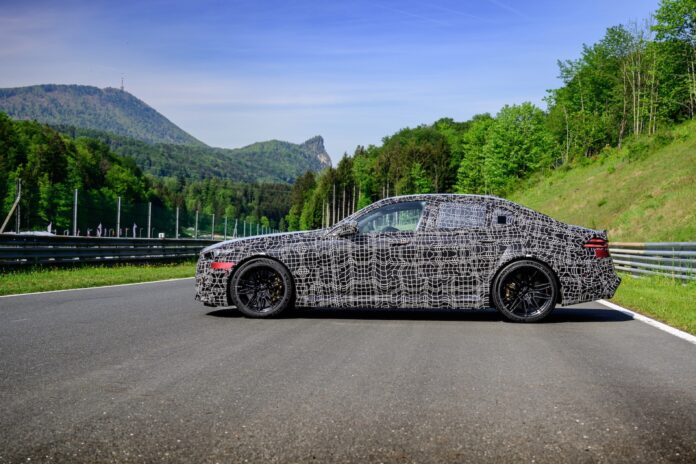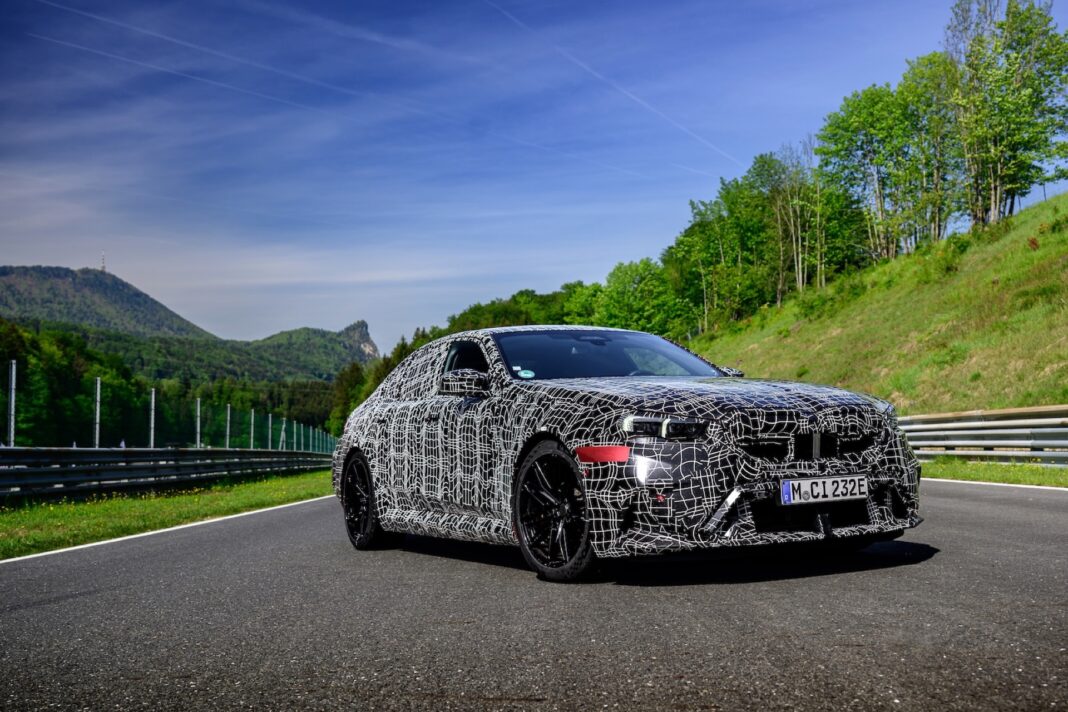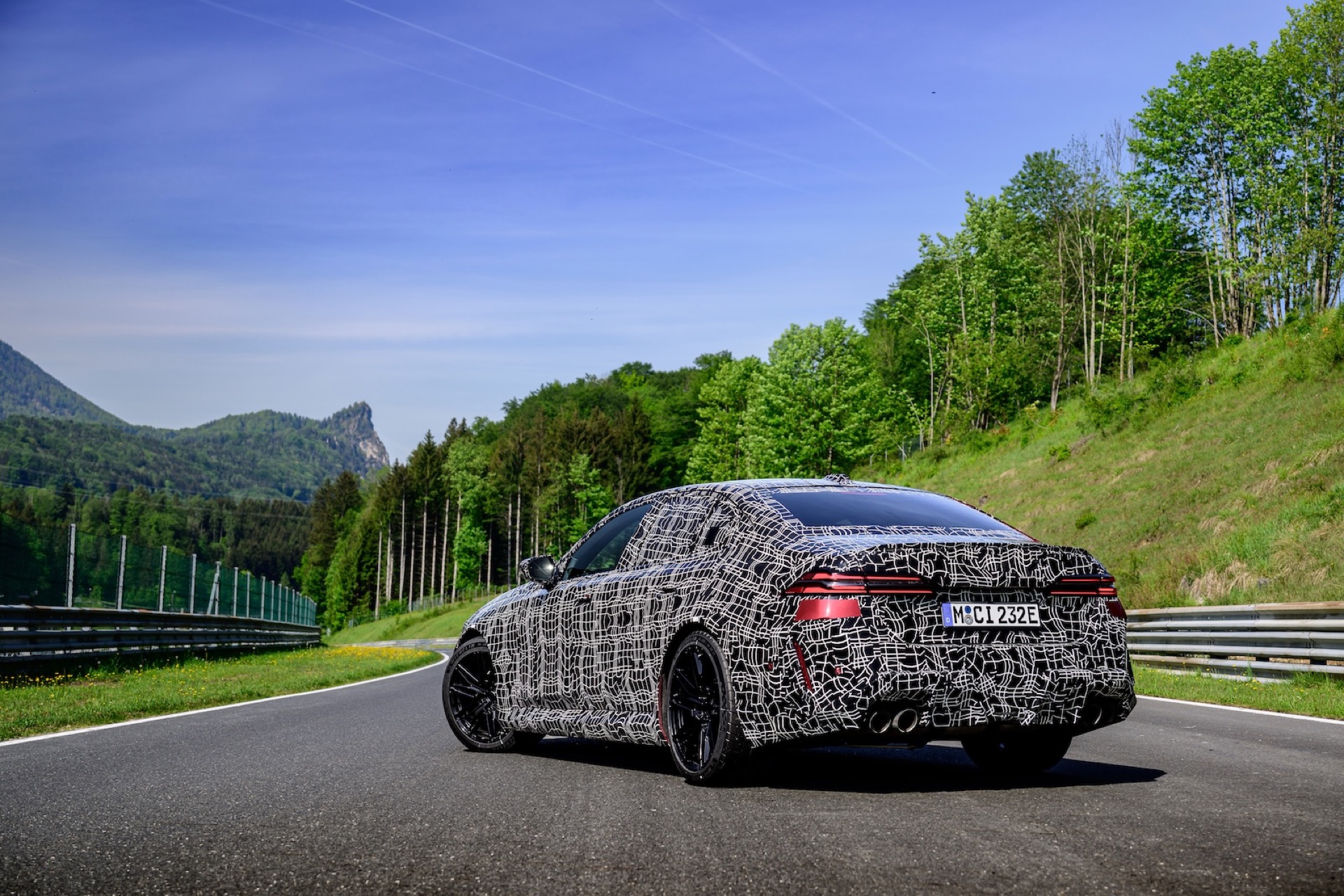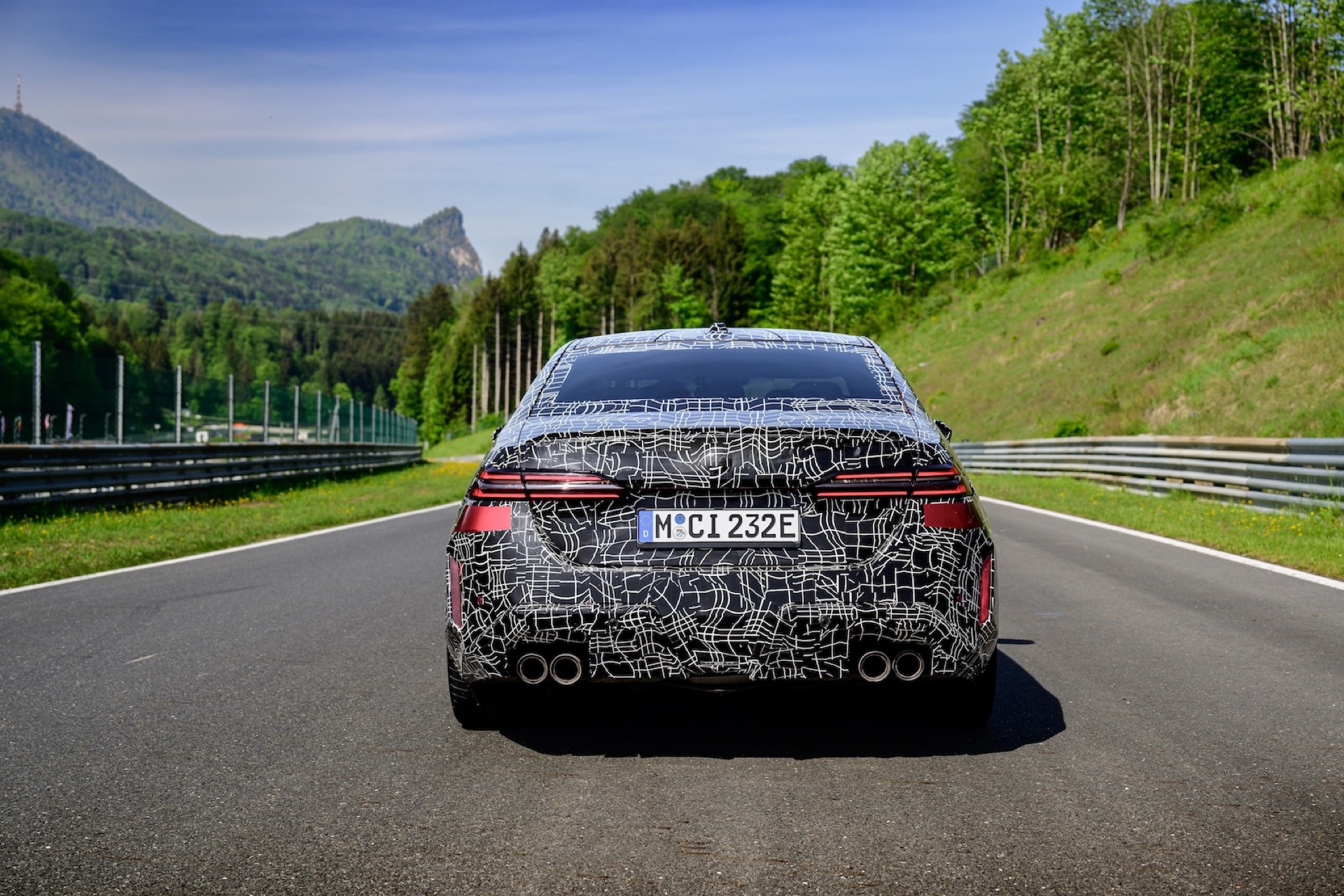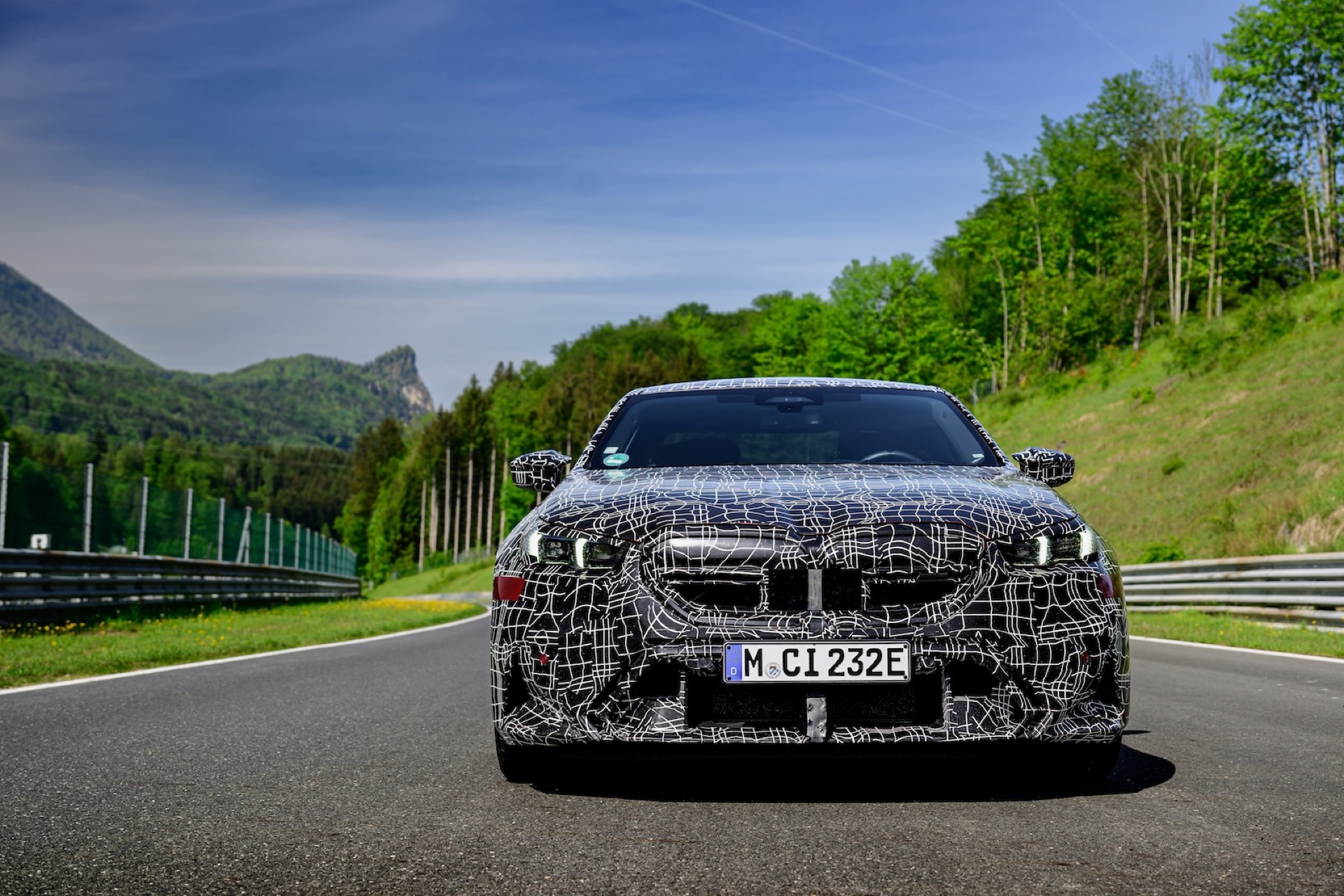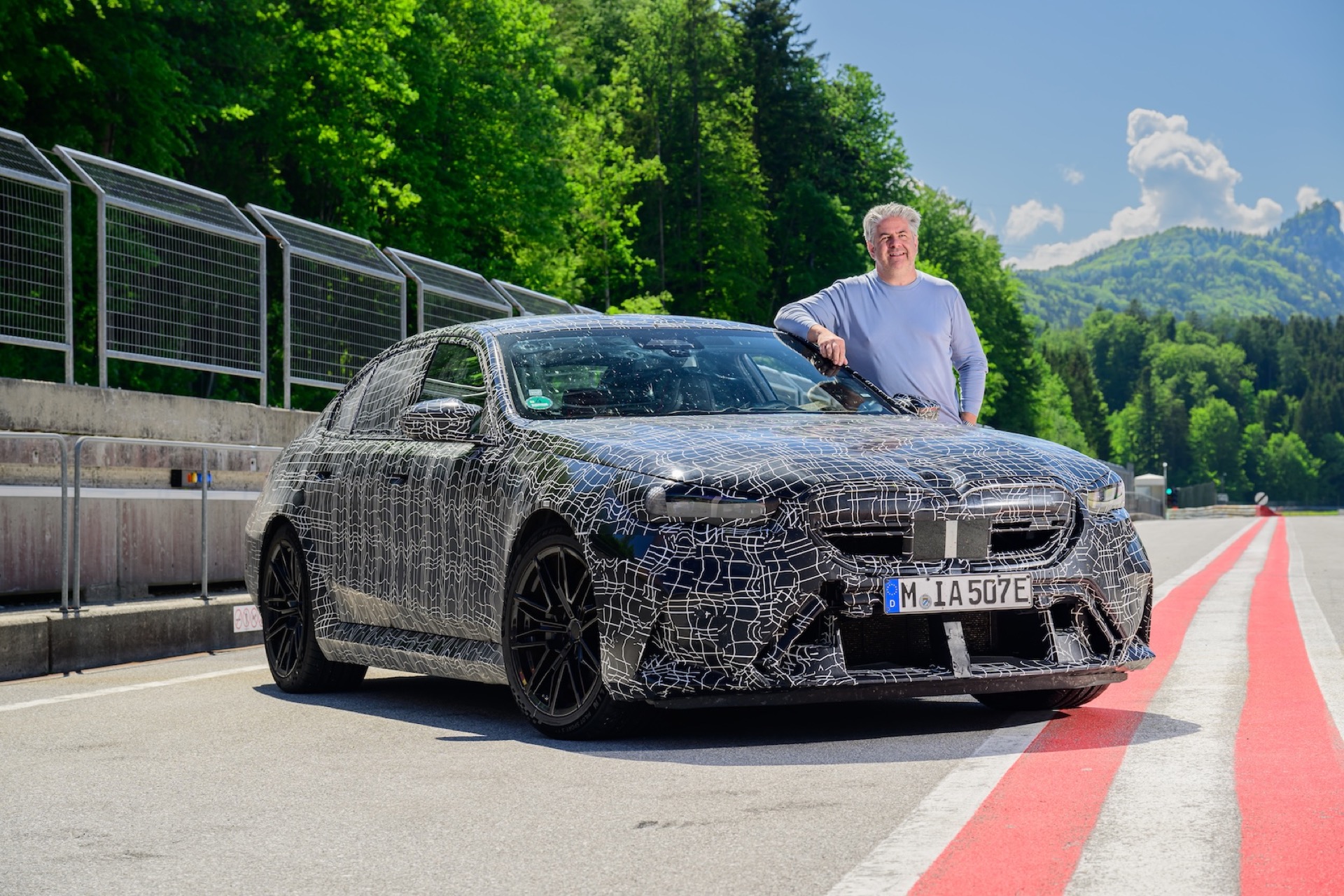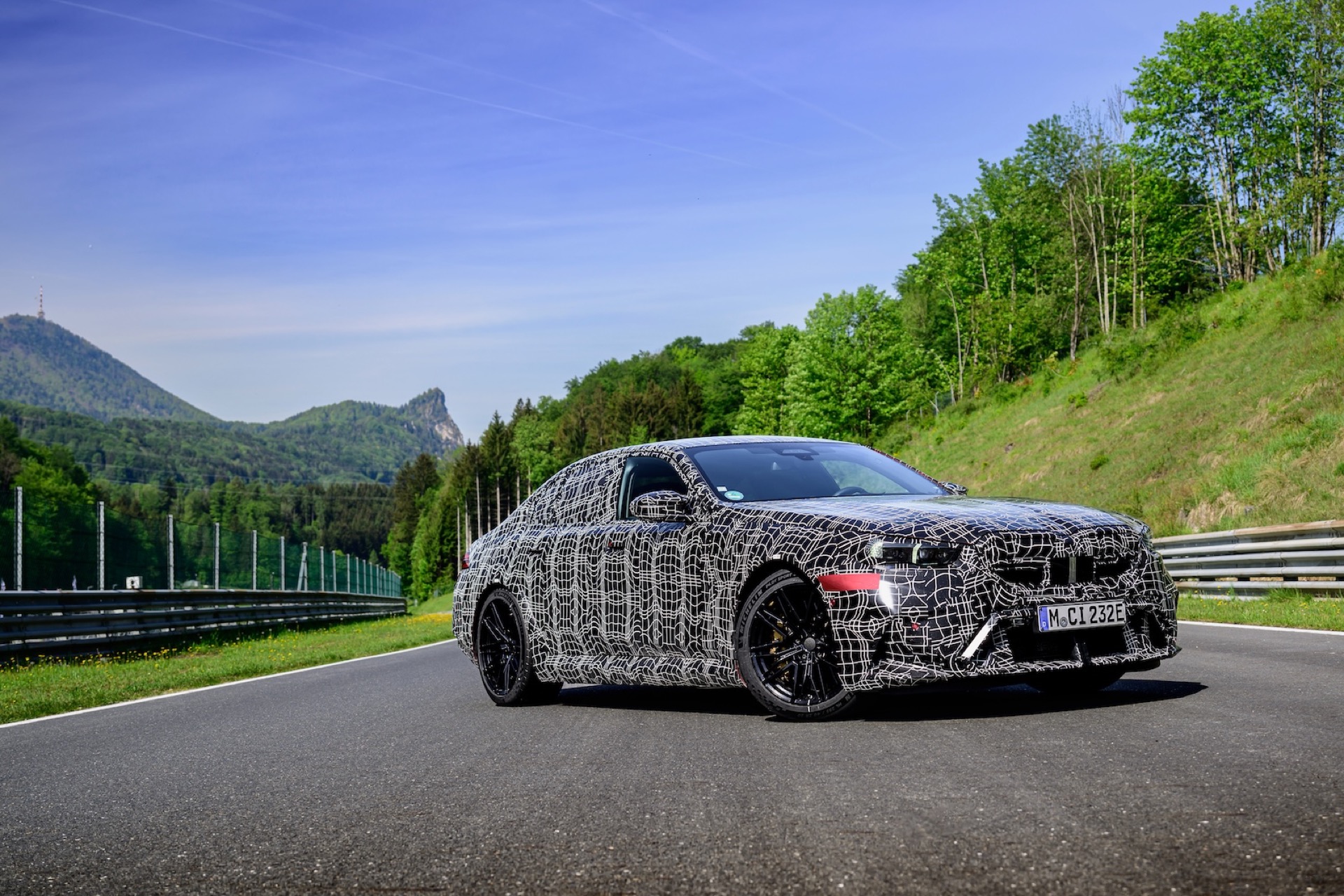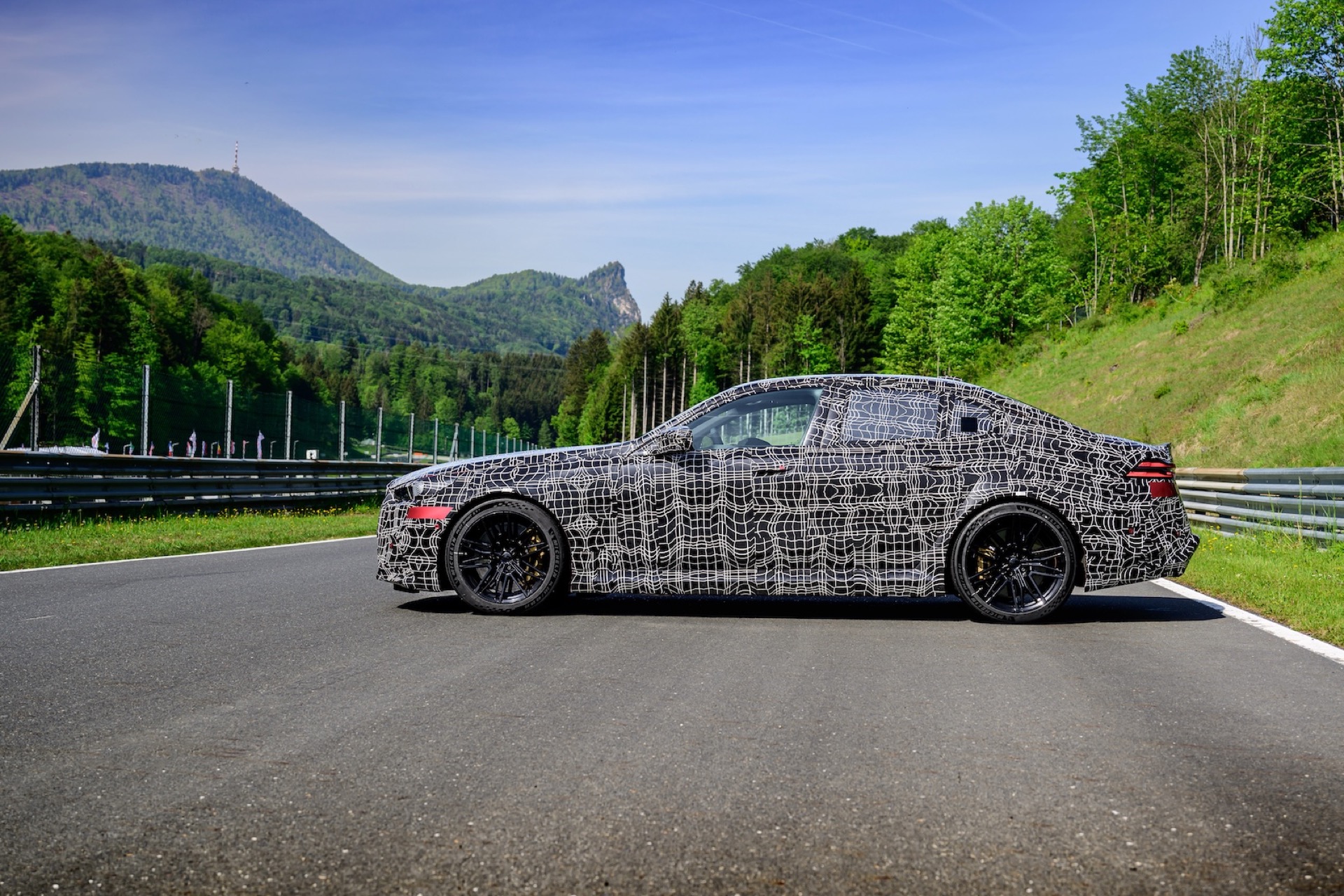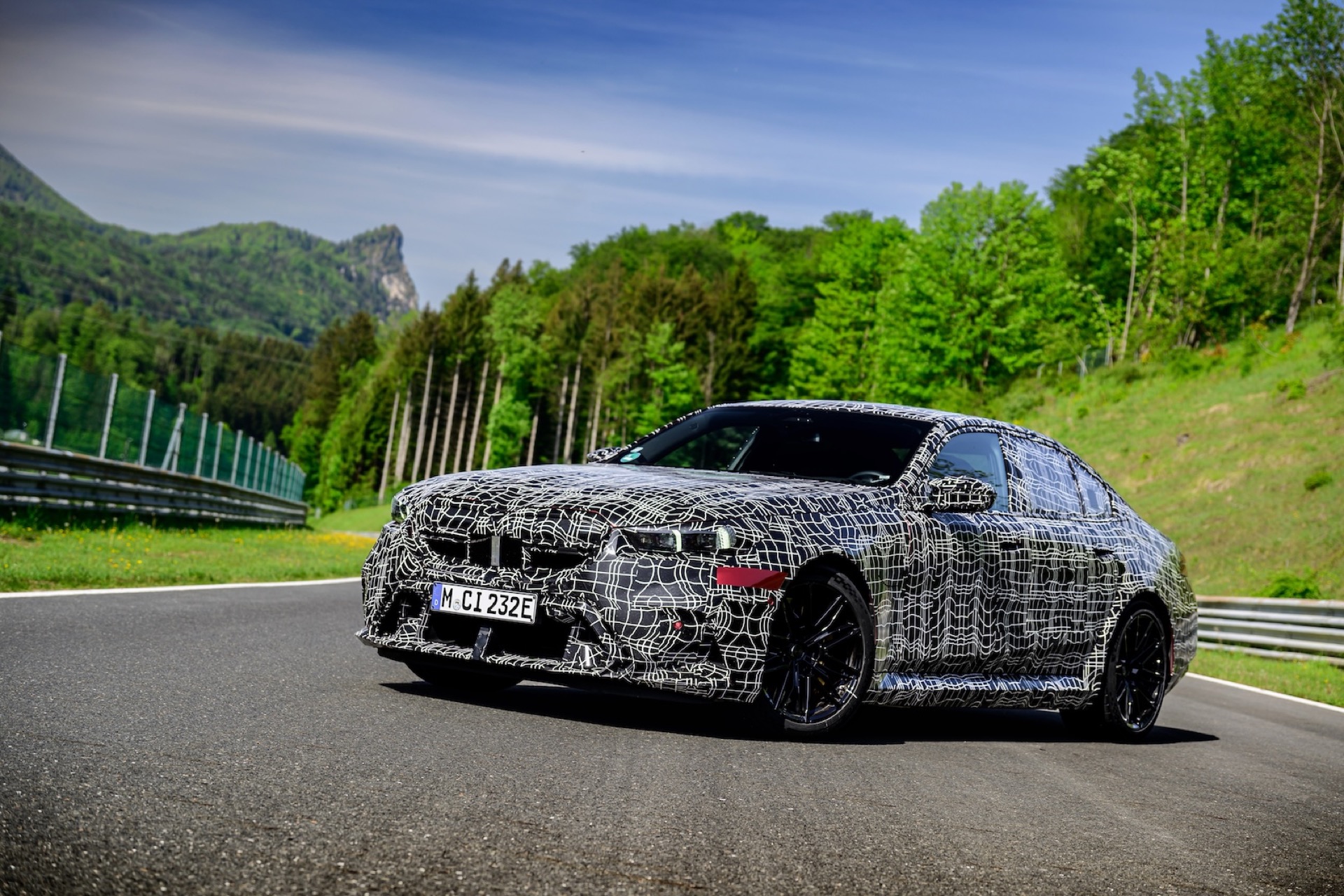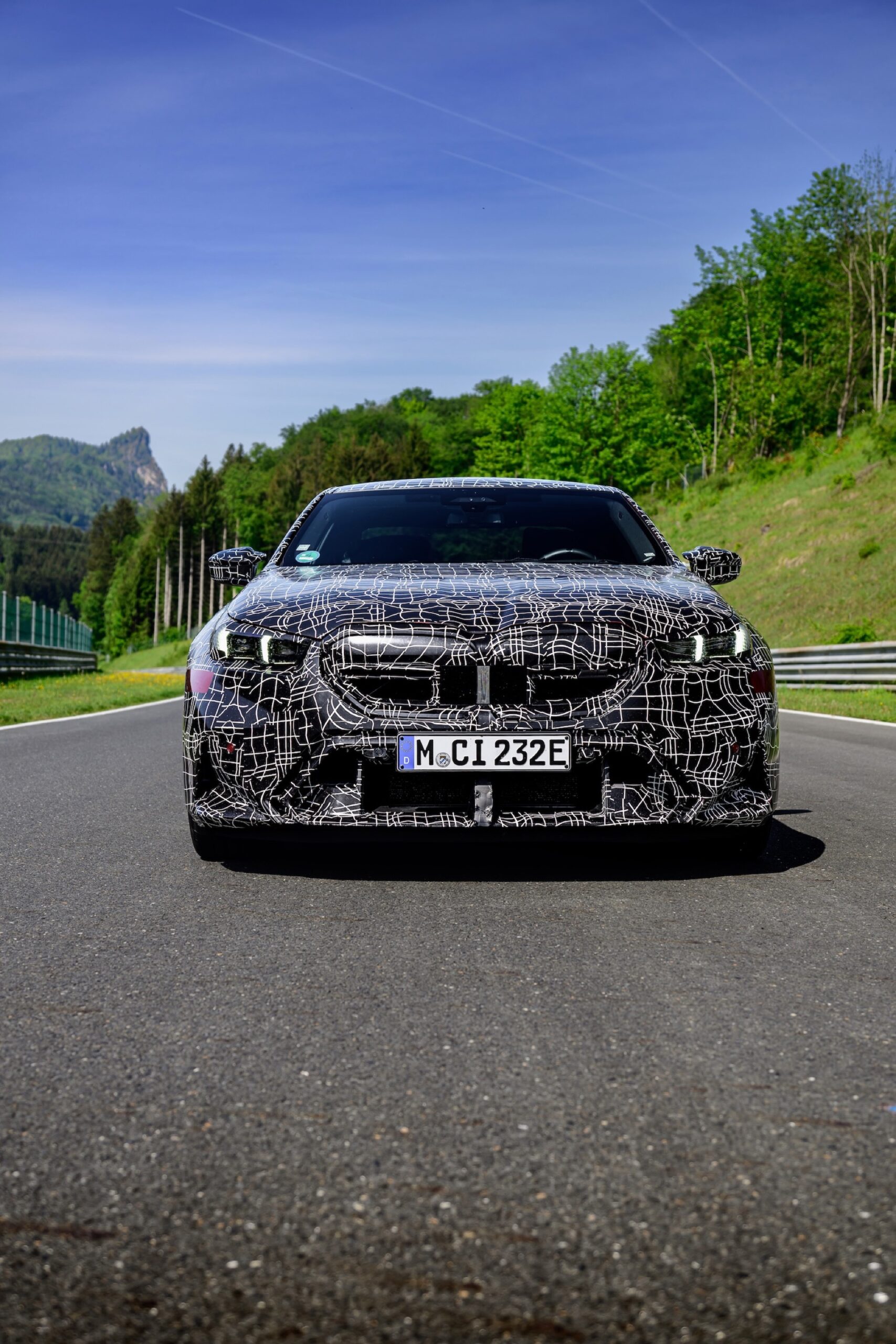BMW introduces its top model of the 5 Series with the new M5. It’s not an electric model, but a plug-in hybrid that sets new standards in the luxury sedan league, following the example of the XM.
BMW has already made a significant impact with its highly polarising power SUV, the XM, which can make you dizzy behind the grippy leather steering wheel. However, things get even more intense—and less conspicuous. The new BMW M5 Plug-in Hybrid makes the competition look like sleepy schoolboys in the car park. A first drive in the G60 generation M5 shows that this car will set new benchmarks. Fans of estate cars can also rejoice, as the M5 will once again be available in a family-friendly Touring version after a long absence. The camouflage wrap barely conceals the flared wheel arches. More apparent are the four tailpipes at the rear and a set of side skirts, combined with the mounted 20/21-inch wheels, leaving no doubt that this is the new top version from Garching.
Unlike some competitors, BMW refrains from a complete shift to the electric age or a deficit in cylinders. The BMW M5 continues to rely on a turbocharged 4.4-litre V8, which, thanks to an electric motor in the transmission tunnel, is strengthened to a mighty 535 kW / 727 PS and an unabashed 1,000 Nm of maximum torque. The 430 kW / 585 PS eight-cylinder turbo is supported by an electric motor hidden in the housing of the eight-speed automatic, contributing an additional 145 kW / 197 PS / 450 Nm.
There is little doubt that this is just the beginning when it hits the market at the end of the year. Sharpened editions with names like Competition or Label Red are expected to extract more than 800 PS from the sedan. Yet, even the standard M5 package offers brutal thrust in response to throttle demands. While few BMW M5s may ever find their way to a racetrack, the qualities this four-door offers are spectacular even in that setting. The magic suspension, featuring a double wishbone front axle and a five-link rear axle in a combination of aluminium and steel, adjusts flexibly depending on the driving program, expertly masking the 2.5 tonnes at the limit.
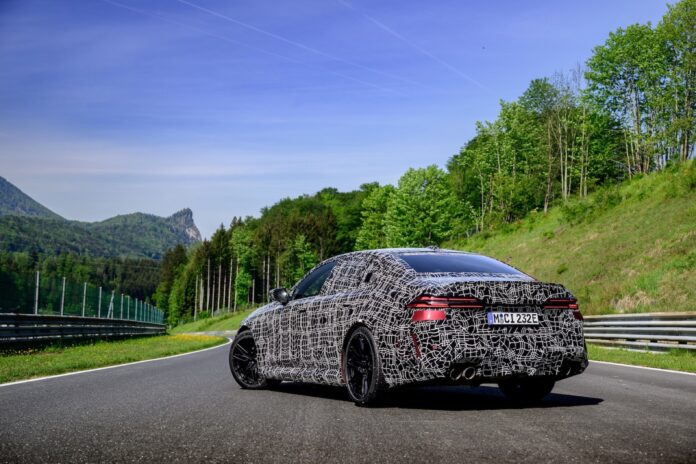
With this kerb weight and a length of 5.10 metres, the next-generation BMW M5 is essentially an M7, a model that never officially existed. The chassis, steering, brakes, and the opulent hybrid drivetrain almost completely negate the massive weight, making it enjoyable to manoeuvre the behemoth from Dingolfing with its neutral handling even on a track like the Salzburgring with its series of corners. While a comparable drivetrain like the Bentley Continental GT Hybrid with similar power and weight employs a ten-piston brake at the front and a four-piston setup at the rear for maximum deceleration, the Bavarian power sedan uses a six-piston fixed caliper at the front and a single-piston floating caliper at the rear.
The excellent handling at the limit is due not only to a neutral weight distribution and fine suspension but also to the mixed tyres. The engine power is transmitted to the road via 285/40 ZR 20 tyres at the front and 295/35 ZR 21 tyres at the rear. This all-wheel-drive hybrid accelerates from 0 to 100 km/h in 3.5 seconds and reaches a top speed of up to 305 km/h on request. For those who prefer to wave the eco flag, the car can travel up to 140 km/h purely on electric power for a maximum of around 70 kilometres. The energy comes from a lithium-ion battery pack hidden under the luggage compartment with a capacity of 22.1 kWh, of which 18.6 kWh is usable. The maximum charging power of a modest 7.4 kilowatts is expected to be increased to a competitive 11 kilowatts by the market launch. The upcoming BMW M5 PHEV is likely to be priced slightly below the XM, costing around 150,000 euros.
